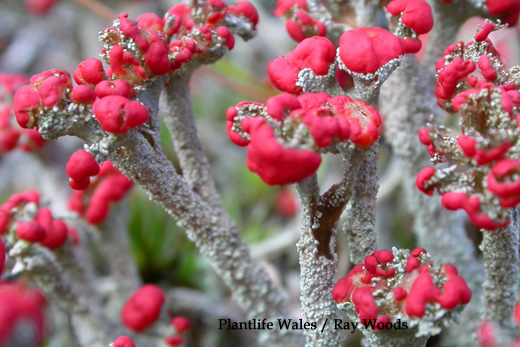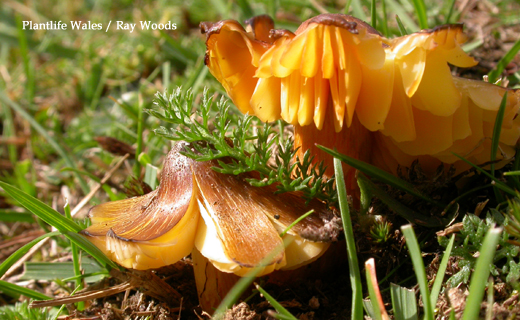UK: Lower plant strategy for Wales
09.09.09
The mosses, lichens and liverworts - collectively known as lower plants - in alliance with fungi (and those who study them!) are the unsung heroes of natural history. So a new strategy produced by the wild plant charity Plantlife in conjunction with Plant Link Cymru comes as good news for fans of these strange beings.
Their diminutive forms combined with their often sporadic appearances means we simply take them for granted too often. But look more closely and you’ll find great beauty and something fundamental to the rest of life on earth as Ray Woods, Plantlife Wales’ Lower Plants Officer says: “These organisms are at the heart of our life support systems.”

Papillose Bog-moss (Sphagnum papillosum) is one of species that will
benefit from the new Plantlife strategy
Wales only occupies about 10 per cent of the land area of the British Isles but it has an extraordinary diversity of lower plants and fungi including 75 per cent of the mosses and liverworts, 74 per cent of the lichens and 80 per cent of the rust fungi. This diversity is probably thanks to Wales having such a broad range of relatively un-disturbed habitats and a small population.
Woods continues: “Without lower plants and fungi, the rest of the living world couldn’t function. We have left their existence to chance in the past but we now have to take positive action to conserve this immense diversity.”

The beautiful and bizarre Devil's Matchstick (Cladonia macilenta)
It’s interesting to understand why these perceived poor relations of the “higher plants” are in need of a strategy like this. It has been pointed out that lower plants are extremely susceptible to pollution but a more symptomatic truth may be that most of the paid experts in Wales are nearing retirement. Sadly, this is probably true of not only Wales, but also the UK and the world too. With no one left to study them their conservation priorities are in danger of sliding from memory, making this strategy all the more important.

Waxcap grasslands are wonderful indicators of healthy habitat
and Wales has some of the best in the world.
Date Waxcap (Hygrocybe spadicea)
Building from the UK-BAP (Biodiversity Action Plan) framework the strategy sets out 15 targets with 45 actions to be completed by 2015. These actions range from stimulating field surveys to arming field centres with the necessary tools for the job. It’s all ambitious stuff, but hopefully raising awareness in this way will draw more young people into the field.
So the next time you see a lowly lichen on a rock or pad gently over a damp sphagnum bog pay some mind to the forgotten heroes of the natural world and think about a new career!
If you want to find out more you can download the full strategy from Plantlife.